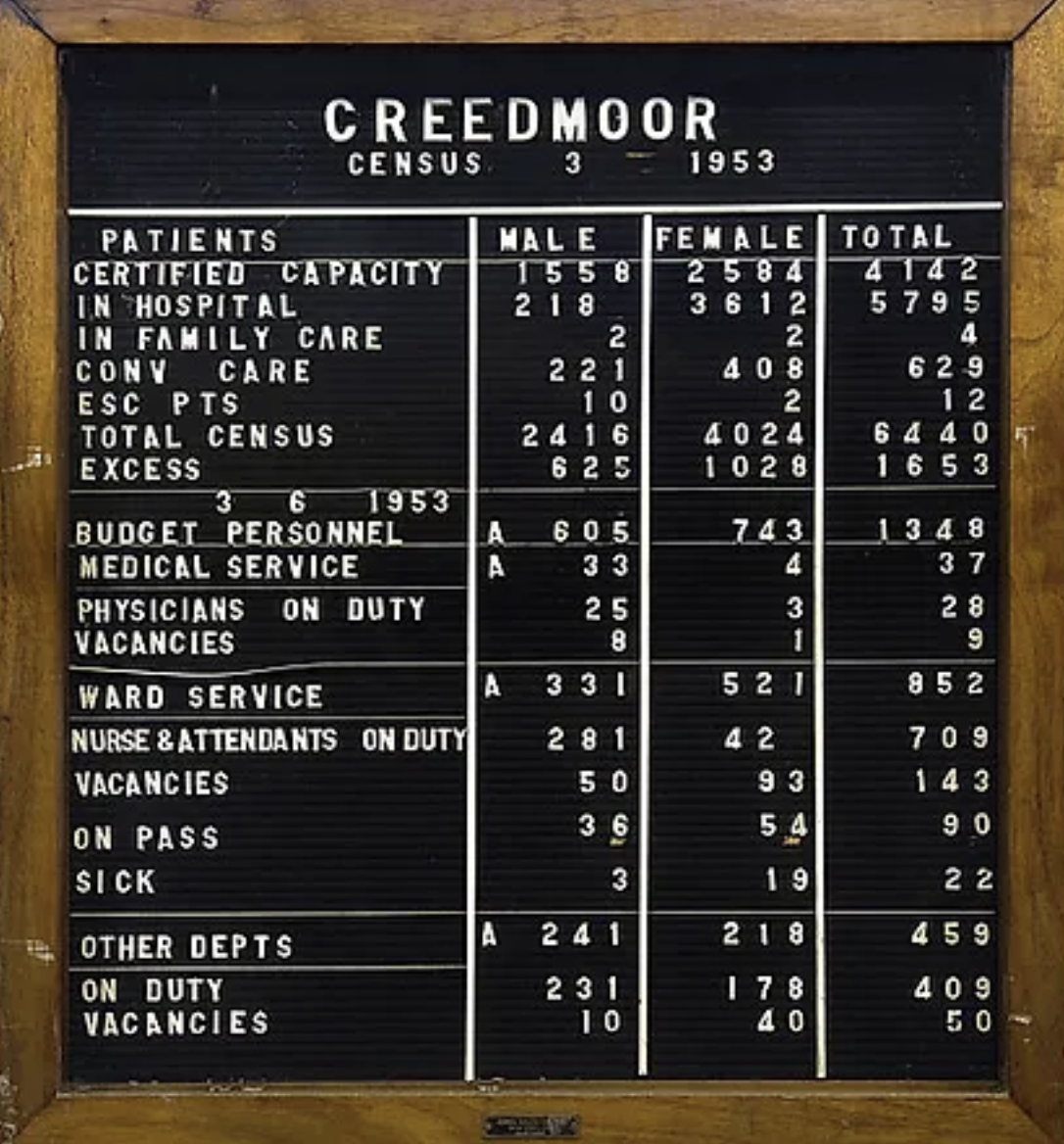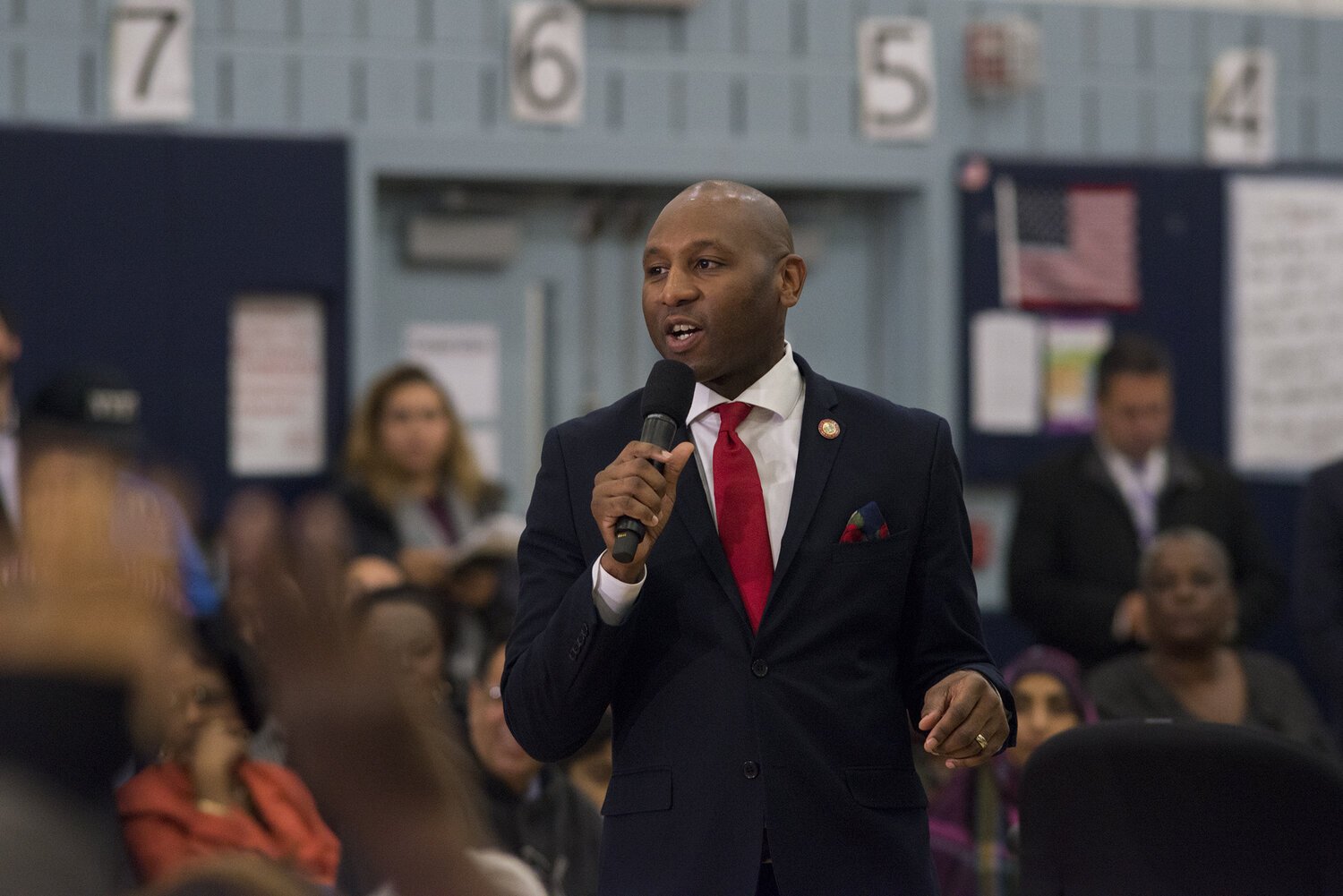Officials look to Queens locals for Creedmoor campus ideas
/The Creedmoor Psychiatric Facility. Photo by Jim Henderson/Wikimedia Commons
By Ryan Schwach
For years, the sprawling campus of Creedmoor Psychiatric Center has remained mostly abandoned.
With its troubling history of patient treatment, the vast campus has become fodder for local ghost stories and urban adventures. Beyond a remaining hospital and a government building, it has been used for little else in recent years.
But that may slowly begin to change.
This week marks the start of what is expected to be a lengthy process in figuring out what to do with the 54-acre Creedmoor campus off Grand Central Parkway in Queens Village.
Empire State Development and Queens Borough President Donovan Richards announced this week a series of community visioning sessions to get community input on what to do with the site which once belonged entirely to the Creedmoor Psychiatric Center, which treated patients in Queens for most of the 20th century.
“I'm hoping that we really turn the tide and get something done – and I'm not hoping, we are going to get something done here,” Richards told the Eagle. “We just want to make sure we're doing it in a way where we're taking in as much community input.”
The visioning process began with an in-person meeting on Thursday night at P.S./I.S. 208, and there is a virtual meeting scheduled for Tuesday, Feb. 7, and other in-person events already scheduled through February.
According to ESD’s website on the Creedmoor project, community events and workshops will continue into July in order to develop a “Master Plan” for what to do with the campus, which is built on state-owned land.
“The redevelopment of Creedmoor presents a tremendous opportunity to breathe new life into Creedmoor Psychiatric Center with community-driven ideas,” said Empire State Development President, CEO and Commissioner Hope Knight, who formerly served as the president of the Greater Jamaica Development Corporation. “This is a path forward with community-driven ideas that offers incredible potential for members of the community to be involved and give bold ideas and thinking to grow Creedmoor to fit the community’s needs and desires.”
In the 1800s, the area was used as a firing range for the National Rifle Association and the New York National Guard, and became a center for psychiatric patients in the 1910s.
The Creedmoor Psychiatric Center, which treated over 7,000 patients at its peak, has dwindled in population since the 1960s as the city began to deinstitutionalize its facilities. Today, it only houses a small inpatient and outpatient psychiatric facility.
A census count of the Creedmoor Psychiatric Facility from 1953. Photo via creedmoor.nyc
Although there are some green spaces, as well as a center for the SNAP program and the Queens County Farm Museum, around 95 percent of the over 300-acre site is mostly abandoned. This includes the notorious Building 25, which is known for the massive amounts of pigeon feces that cover most of its floors and walls, built up by generations of the city’s favorite flying rats.
“For years, the land on the Creedmoor Psychiatric Campus has been neglected and underutilized,” said local City Councilmember Linda Lee, who also chairs the Committee on Mental Health, Disabilities, and Addictions.
“New York City currently faces a multifaceted mental health and homelessness crisis that will require conscientious planning and coordination between community partners and government at the local, state, and federal levels,” she added.
The question of course, is what to do with it now, which may have officials and developers at odds with the surrounding community.
“I think there's a myriad of things we can think about here,” Richards said. “One, how do we continue to chip away at the housing crisis in Queens? How do we think about health care? How do we think about community facilities, transportation and job opportunities?”
“I don't want to get ahead of the community, but what I would say is that this opportunity enables us to correct failed policies that really exacerbated issues around mental health and housing stability,” he added.
The borough president hopes the planning can be a grassroots effort, which could eventually include a stakeholder’s task force.
Members of civic associations in the neighborhoods of Glen Oaks, Bellrose, Queens Village, Rocky Hill and Bell Park, which surround the campus, have already set out a list of goals for what they want to see done at Creedmoor, and it does not include housing.
“We definitely do not want anything that produces high volume…If there is housing it has to be low density,” said Rocky Hill Civic Association President Suzanne Peritz. “We do not want all the traffic.”
Locals are worried that large scale housing – anything above four stories, specifically – would be out of character with the neighborhood and would add unnecessary and unwanted stress on the community’s roads, schools, and power grid.
“The infrastructure… really need[s] to be upgraded if they're going to have multi-story buildings in this facility,” said Michael Mallia, the chair of Community Board 13’s Land Use Committee, the director of Bellerose Commonwealth Civic Association and a local who lives near Creedmoor. “If you add 1,400 residents, it's going to be a nightmare.”
However despite his objections, Mallia is pretty confident that some kind of housing will be included in the plan.
“I think that it's a foregone conclusion that there's going to be housing on this lot. It's just the amount, the density and the amount that's earmarked for affordability,” he said.
Petriz, Mallia and the rest of the adjoining civics have created their own list of goals and community needs, which they hope will be met by whatever it is that is eventually built at Creedmoor.
“We should be able to benefit,” Petriz said.
The coalition says that they want the plans to serve the existing community first, keep density low, utilize current buildings wherever possible and create adequate public transit, the last of which Richards also stated as a priority.
Queens Borough President Donovan Richards is coordinating with Empire State Development on plans to redevelop the Creedmoor campus. Photo by Jeff Reed/City Council Photography
“There's a real opportunity here to make sure that there’s a multi-pronged strategy around improving transportation here,” Richards said. “There has always been talk about expanding subways further into Eastern Queens – I don't know if I'll be alive when it happens but I'm all for it if it's feasible.”
The group of local civics would prefer the space be community space, something that can be used by local teens and seniors, like a recreation center, or even veteran or senior housing.
Richards has said he doesn’t want to get ahead of the process, but does hope the project can be heavily influenced by these same community stakeholders, even if they don’t agree.
“One of the things I wanted to ensure through this process is that the community was heard,” he said. “And it doesn't mean that everything that community wants, they're going to get, and it doesn't mean that we're going to agree on everything because that's the nature of development and communities,” he said. “But we want to try to get to a place where everybody is comfortable. That's really the goal.”
Richards also mentioned the need for more school seats and community facilities, as well.
Regardless, the message and the promise of community input over the next several months hasn’t assuaged the concerns of the civic leaders.
“We think they already have an idea in mind,” Mallia said. “And this is just to placate the public and I feel like we had some say in it, but at the end of the day, they're gonna do what they want to do.”






